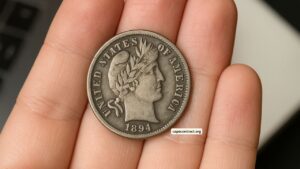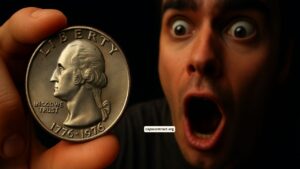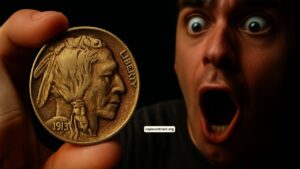Could a Bicentennial Quarter from 1976 be hiding in your pocket change? While most Bicentennial Quarters are worth only 25 cents, some rare versions have sold for staggering prices—up to $150 million.
These coins, minted to celebrate America’s 200th birthday, could be sitting in your spare change, in old jars, or even hidden in wallets.
Here’s everything you need to know about spotting these rare treasures and what makes them so valuable.
Why These Quarters Are Worth Millions
In 1975 and 1976, the U.S. Mint released billions of Bicentennial Quarters featuring a colonial drummer on the back and dual dates “1776-1976” on the front.
Most of these quarters are made of copper and nickel, but some were struck with special features or metals, making them extremely valuable. Here’s a breakdown of the reasons some Bicentennial Quarters are worth millions:
| Feature | Details |
|---|---|
| Year | 1976, with the dual dates “1776-1976” |
| Mint Mark | “S” for San Francisco Mint (often silver) |
| Error | Doubled Die or Precious Metal (such as gold or platinum) |
| Estimated Value | Up to $150 million |
| Key Identification | Silver weight, doubling, or unusual metal composition |
Most of the Bicentennial Quarter are common and composed of copper-nickel, but a few were struck at the San Francisco Mint using 40% silver, making them more valuable.
Some even have rare errors, like the doubled die, where the coin’s design appears doubled. Even rarer, some were struck on precious metal planchets, possibly gold or platinum, which dramatically increases their worth.
In a 2024 private auction, one such coin was reportedly sold for $150 million, though details of the sale remain unconfirmed.
How to Spot a Valuable Quarter
If you want to see if your 1976 Bicentennial Quarter is worth a fortune, here’s how to spot the rare versions:
- Look for the “S” Mint Mark: Check for the San Francisco mint mark (an “S”) under George Washington’s neck, signaling the coin is silver.
- Weigh the Coin: Regular quarters weigh 5.67 grams, while silver quarters weigh 5.75 grams.
- Check for Errors: Use a magnifying glass to check for doubling on the date, “LIBERTY,” or “IN GOD WE TRUST”. The rarest quarters might have a unique sheen or color that suggests a precious metal composition.
- Examine the Color: Silver quarters have a distinct shine compared to copper-nickel ones, and they may look darker or have a unique tone.
If you believe you have found a rare coin, it’s essential to have it verified by a professional grader to determine if it’s genuine.
Why Collectors Go Wild for Them
Coin collectors value these Bicentennial Quarters because they represent a significant moment in U.S. history—America’s 200th birthday.
The scarcity of the rare versions, combined with the mystery surrounding their creation, makes them highly sought after. Some of these coins were never meant for circulation, adding an extra layer of intrigue.
As the U.S. celebrates its 250th anniversary in 2026, interest in Bicentennial coins has soared. This demand continues to drive up their value, making it a prime time for collectors to invest in these historical treasures.
What to Do If You Find One
If you think you’ve found a rare Bicentennial Quarter, follow these tips:
- Don’t Clean the Coin: Avoid cleaning the coin, as it could reduce its value. Any scratch or cleaning could lower its worth.
- Store the Coin Properly: Use a protective holder to keep the coin safe from further damage.
- Get It Graded: Send the coin to a professional grading service like PCGS or NGC to confirm its authenticity and value.
- Consider Selling: If it turns out to be a rare precious metal quarter or one with a double die error, contact auction houses like Heritage Auctions to sell it for potentially millions.
Check Your Change Now
While the chance of finding a $150 million Bicentennial Quarter is slim, it’s still worth checking your spare change.
These rare coins are still in circulation and could turn up in everyday transactions or hidden collections. Some collectors have even found valuable coins in vending machines, old coin jars, or inherited estates.
Grab a magnifying glass and start searching—your quarter might be worth more than just 25 cents.
While most 1976 Bicentennial Quarters are worth only face value, a small number of rare coins are worth millions.
These special coins, often struck with 40% silver or unique errors like the doubled die, continue to captivate coin collectors and investors alike.
If you suspect that you’ve found one of these treasures, be sure to have it professionally graded and authenticated. Whether you find a coin worth hundreds or millions, it’s always worth checking your change!
FAQs
What makes a Bicentennial Quarter worth millions?
Bicentennial Quarters are valuable if they are made of silver or have rare errors, such as a doubled die or precious metal composition.
How can I identify a valuable Bicentennial Quarter?
Look for the “S” mint mark, check the coin’s weight, and look for doubling in the design or an unusual sheen.
What should I do if I find a rare Bicentennial Quarter?
Do not clean the coin, store it in a protective holder, and have it graded by a professional for authenticity and value.




